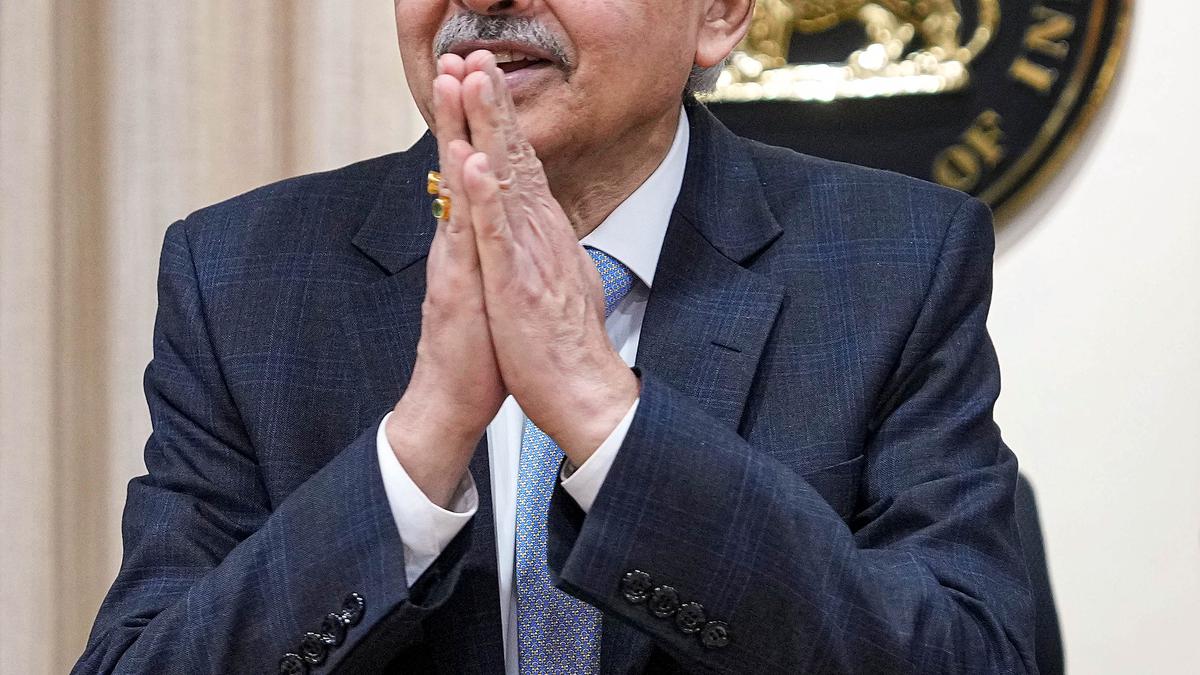
Why the RBI revised its GDP growth forecast to 7% in FY24
The Hindu
“To expect the unexpected shows a modern intellect,” is an oft-quoted line from playwright Oscar Wilde. For even the smartest minds, the Reserve Bank of India’s bold call to revise India’s GDP growth target to 7% in FY24--from 6.5% earlier--seemed unexpected yet spirited. A closer scrutiny shows that it comes from a renewed optimism that its year-long efforts to contain inflation are yielding results as well as that economic growth is gaining momentum with green shoots appearing in more supporting segments.
Virat Diwanji
“To expect the unexpected shows a modern intellect,” is an oft-quoted line from playwright Oscar Wilde. For even the smartest minds, the Reserve Bank of India’s bold call to revise India’s GDP growth target to 7% in FY24--from 6.5% earlier--seemed unexpected yet spirited. A closer scrutiny shows that it comes from a renewed optimism that its year-long efforts to contain inflation are yielding results as well as that economic growth is gaining momentum with green shoots appearing in more supporting segments.
For the record, the status quo in key policy rates was expected as per the consensus. The inflation number in October--dipping below 5%--had come closer to the RBI target of 4% after a 250-basis points hike. This is largely due to food inflation moderating to 6.2% in October owing to vegetable prices correcting and fuel inflation slipping due to the reduction in LPG prices in August. Coupled with the steady effect of the policy rate hikes, the disinflation in core inflation quickly turned beneficial. Even though consumer price inflation (CPI) may go up to 5.6% in Q3 and 5.2% in Q4, it is not expected to disturb the inflation target for FY24 at 5.4%.
However, the courageous call of 7% comes--not just from the 7.6% Q2 performance, propelled by strong investment and government consumption, but from emerging and encouraging underlying factors. Demand conditions are robust; rural consumption is improving as seen from higher sales of FMCG goods while the urban consumer is holding up the economy. Automobile sales hit a new peak in November despite high interest rates, with high-end vehicles getting a good preference.
Manufacturing sector has improved on easing input cost pressures, adding more employment while the services sector is remaining strong and expanding rapidly. GST collections also show a healthy trend. Investment activity has gathered pace with due support from the public sector capex; sectors like steel and cement will also trigger growth in a hitherto-subdued commercial vehicles and construction equipment. Overall, capacity utilisation has gone up even as private companies started investing in fixed assets. From the financing perspective, banks have funded the commercial sector to the extent of ₹17.6 lakh crore so far in FY24 as against ₹14.5 lakh crore last fiscal. Exports of goods and services also continue to be positive amid global economic uncertainties.
There are many more positives; strong private consumption, continued buoyancy in services, healthy ‘twin balance sheets” of banks and corporates, high capacity utilisation and the government’s renewed spending on infra would lead to growth. To its comfort, autonomous factors such as higher currency leakage during the festive season, government cash balances and open market operations have helped the central bank maintain systemic liquidity in its comfort zone. We expect the liquidity to stay minimal or negative as the RBI is now keen to reduce a bloated balance sheet, used for the COVID-19 stimuli. Such resilience in core pillars of the economy must be enough to go slow on further rate hikes.
However, inflation, especially from crude and global commodity prices, prolonged geo-political issues and financial volatility can certainly mar this goal, impacting balance of payments, rupee and stock markets. The U.S. Fed remains the singular element to exert undue influence on the RBI’s calculations. Domestically, that credit goes to food prices.

Air India has signed an agreement with Bengaluru Airport City Limited (BACL), a subsidiary of Bangalore International Airport Limited (BIAL), to develop a built-to-suit facility for the AME program that will feature modern classrooms, well-equipped laboratories for practical training and a team of qualified trainers.










